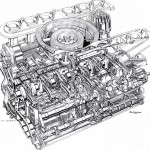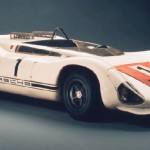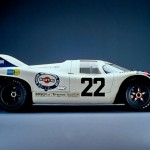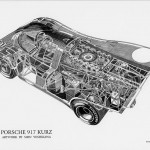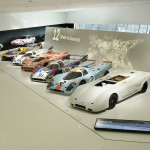Techniques For Keeping Cars Light. Porsche Style.
The newly opened Porsche Museum in Zuffenhausen in Germany, is a magnificent edifice. The building dominates the Porscheplatz and fulfills a long held wish by Porsche to be able to show the proud history of this giant achiever in a sea of consumer product manufacturers. The Museum display features history, products and showcases Porsche’s relentless pursuit of excellence.
Of particular interest is a display showing the efforts to reduce weight in Porsche vehicles. The famous twelve cylinder 917 engine is featured by showing its unusual crankshaft. The early engines were 4.5 litres and produced 426 kW (570HP). The crankshafts were made of titanium. Titanium has the highest strength to weight ratio of any metal and is 43% lighter than steel. It has excellent corrosion resistance and may be alloyed to a wide variety of other metals. It is quite ductile and easily welded. It is fairly hard – but not as hard as some heat treatable alloy steels. Unlike most metals, it is a poor conductor of electricity and heat. As you may expect, titanium is expensive.
The net result of this Porsche exercise was that the 917 cranks weighed a total of just 13 kg, being 12 kg lighter than a normal iron or steel crank.
Another weight reducing exercise was for the 910/8 ‘Bergspyder’ hill climb car of 1967. Porsche made a titanium sphere of about 450 mm diameter as a fuel tank. A sphere is the most efficient shape for a pressure vessel – ideal in the sense that the minimum amount of material in the wall of the vessel is needed to withstand the pressure. The 908 spherical tank was only about a millimeter of titanium wall thickness and was fitted with a rubber bladder. The fuel was added, the bladder pressurized and when the flag dropped the tap was turned on with the ignition and the 910/8 stormed up the hill to victory in the hands of Rolf Stommelen and Gerhard Mitter. The sphere eliminated the need for a normal fuel pump and the normal fuel tank. The 910/8 weighed 400 kg and had an 8 cylinder 2 lt engine producing 200 kW (268HP) – a weight/power ratio of 2!

